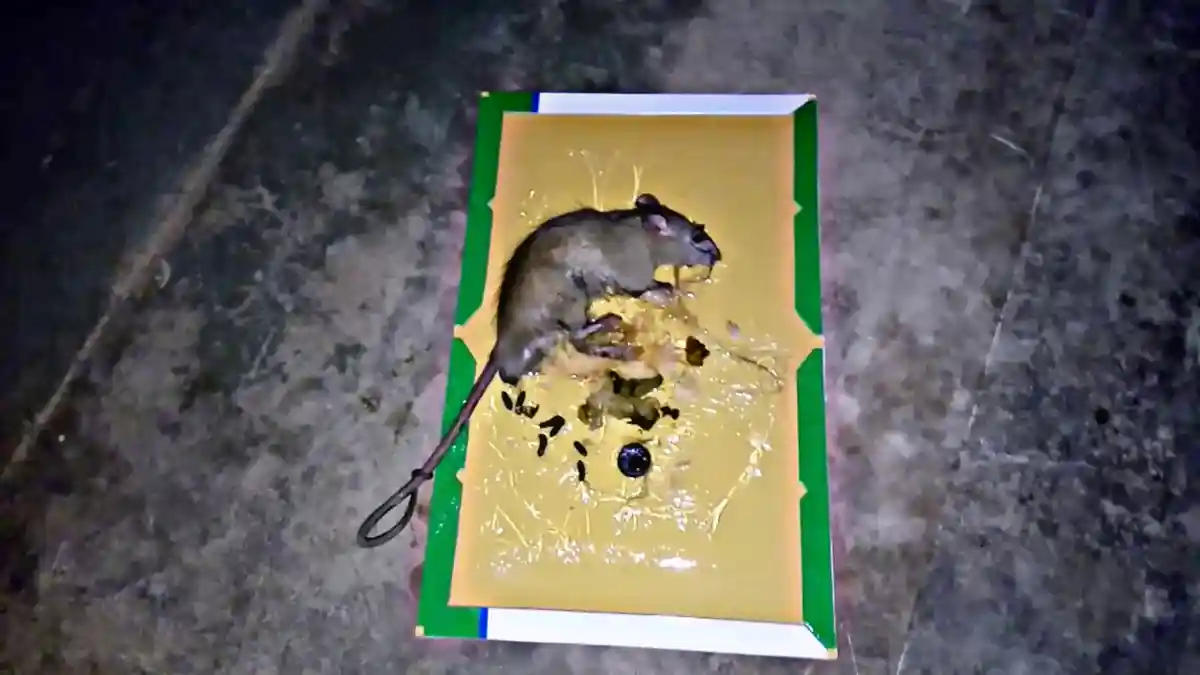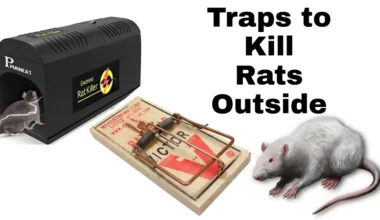Bucket rat trap not working? Generally, bucket rat traps will work for rats. They are typically affordable, efficient, and humane for catching rats. You’d also find it easy to set up baits for the rodents when placed in the right area. However, even though stubborn rat problems can be solved using bucket traps, rats can outsmart you, making your trap ineffective.

Bucket rat trap not working
You’ve tried to bucket-catch the rats that recently entered your home, however, you’re having challenges. Below are possible reasons why your bucket rat trap is not working:
1. Bucket trap design
Most times, it could be that you used heavy material for the trap. Also, the spaghetti sauce and pipe might act too slowly to the weight of the rat. Thus, you want to use a smaller dowel and be sure that the notches don’t stop the pipe from rolling.
If you have water in your bucket, the rat will get soggy and can’t get its feet under it to jump or climb out to freedom. You need a coated wire that skewers a pop can from the top to the bottom. Also, peanut butter can be placed in the middle of the can. Place this combo across the bucket with a connection to the can and wire.
If the rat climbs up to any edge of the can, it will fall back to the bottom of the water. The can must be lightweight and easy to turn. If a wide dowel is used, then the rat finds balance, thus, it’s best to use thin material, so that they have to struggle to find a balance.
2. The rats do not feel comfortable with the traps
If your bucket trap is not trapping the rodents, and you haven’t completely gotten rid of other food sources bringing them in, you’ve not made the rats comfortable around the traps yet.
Rats are quite sensitive to changes in their environment. These critters will try to avoid any foreign object until they get used to it. So, let’s say you previously had snap traps or the inhumane glue trap—the new bucket trap is strange—and they need to trust it enough to go closer. Therefore, you want the rat to become comfortable with the bucket traps around the food source.
Once the rats get comfortable with your bucket trap and the easy source of food, try removing the easy meal. Make it tougher to get the meal and watch the number of rats your bucket trap will catch overnight.
3. Wrong choice of bait
Rats will avoid your bucket trap due to your choice of bait, the quantity, and even the number of bucket traps you set. Regarding quantity, make sure it’s just enough to attract more. The manner of the bait placement must also be such that draws the rats inside the bucket.
Rats also have a food preference, it is possible that they might not be attracted to the bait you are using. This means the rats might be temporarily eating from other sources (they could be eating roaches, furniture, books, etc.), so they are not attracted to or hungry for your bait, no matter how tasty it is.
The effectiveness of your bucket trap reduces if you keep baiting it with the wrong type of food. Cheese, bacon, cereals, or meats are the traditional go-to baits to catch rats, however, these critters can be picky. Consider these options:
- dried fruit and berries
- unflavored dental floss
- slugs, snails, or snail shells
- nuts of all varieties and peanut butter
4. Bucket placement or location
Rats could get uncomfortable with your bucket trap if the placement is suspicious or not attractive. Regarding the positioning, rats prefer running along the base of walls due to the added cover it provides. Moreover, they use their whiskers to navigate in the dark when running along walls, so they only focus on the obstacles ahead.
Place your bucket traps strategically around your home with attention on those areas you spot rat evidence. Below are some of the crucial places to place your bucket trap:
- garage
- corners
- along walls
- crawl spaces
- holes in walls or ceiling
It’s also important to spread out your rat traps. Traps should be kept about 15 feet apart from each other.
5. Seek professional intervention
When your rat bucket traps aren’t working, rodent removal experts can safely and humanely remove these pests from your home. They will not only safely remove them from your home but will also prevent them from returning by sealing up any holes and cracks rats use to enter your home.
How do you attract rats to a bucket trap?
You want to use attractive bait to help trap the rats. And most importantly, replace the bait regularly. If the bait sits for too long, it might lose its scent, thus, becoming less appetizing for rats. Below are some of the baits to use to attract rats to a bucket trap:
- peanut butter
- pet food
- kitchen scraps
- gumdrops
- bacon
- dried fruit
- raisin bread
- unshelled nuts
If these selections don’t work, use higher-quality bait such as fresh meat or fish as bait. Note that using different kinds of bait might be necessary, depending on whether you have roof rats or Norway rats. For example, roof rats (also known as black rats) are often attracted to oranges and other citrus, snails, berries, and avocados. On the other hand, Norway rats, sometimes referred to as sewer or brown rats, are attracted to cereal grains and meat.
Apart from using an effective rat bait, you want to place traps in appropriate locations to enhance your chance of catching rats. In the quest for survival, rats tend to travel along the shortest or unimaginable routes. No matter how fanciful your bait, they are unlikely to travel through the middle of your room for it.
Disposing of captured rats in bucket trap
When you finally catch the rats, consider the following safety tips:
Rats and rat droppings are carriers of diseases like hantavirus, leptospirosis, lymphocytic choriomeningitis (LCMV), Tularemia, and Salmonella, the King County explains. These critters can also be plagued by fleas and ticks, so you want to avoid touching dead them with bare hands.
That said, use disposable plastic gloves when handling the captured rats (whether dead or alive). Put it in a sealed disposable bag and dispose of the gloves and the sealed bag in the trash. Make sure to wash your hands thoroughly.
Note also that rat feces, saliva, urine, and even nesting materials are potential disease carriers. People even get ill from rat-borne infections due to sweeping and vacuuming, so avoid sweeping the areas where you find rat evidence to avoid breathing in possibly contaminated dust.
When cleaning to reuse the bucket, you should notice rat droppings. In this case, make sure to use a mask and disposable gloves while working to make the trap reusable. To clean the bucket area, allow it to ventilate for some time and then apply disinfectant. Vinegar is not recommended for disinfection.
Are bucket traps humane?
Bucket traps are generally humane. However, if you fill the bucket with water for the rats to drown after they are caught, it is not a humane way of euthanizing them. It is only humane when you can retrieve the rat alive and, perhaps, release them back into the wild. Even that does not guarantee their safety as they might end up as food for carnivorous predators.
If you want the rat to enjoy a second chance, release them with food to sustain them while they get used to their new environment. That way, they don’t wander into predators.
Keeping the rats from returning to your home
The fact is: you won’t capture rats with your bucket trap forever. At some point, you’d stop seeing them if your bucket trap works the way it should. And when your bucket trap stops catching rats but the food is intact and no rat evidence (feces, urine, saliva, and nesting materials), then the rats are gone.
At some point, however, they will return—only that this time, it’ll be a new group who managed to enter and nest in your home. Do the following to stop rats from returning:
Eliminate food sources
While expelling rats with your bucket trap, you also want to eliminate competitive food and water sources. Rats are neophobic—they hardly try new things and are very skeptical.
To eliminate the food sources keeping them around, store food in galvanized containers with secured lids. If not possible, move your food to a different place temporarily.
You also want to clean up all corners of bird feeders. Your trash can should have a secure or locked lid, if not, use bricks or heavy stones to pin down the lid.
Seal entry points
Rats can run along tree branches or chicken cages. Look at your structure, the trees, and shrubs around it for branches that touch the roof. Prune them, cut off the protective shrubbery around structures, and seal cracks and holes these critters are likely to use as an entry. If you notice rats running around the dumpster area, look around for holes and cracks and seal them up.
Lastly, if you have difficulty fighting off rats from your property, do not hesitate to involve pest removal professionals. They have the tools and skills to efficiently end your rat problem.
Read also: rat just got off glue trap! Returning?






